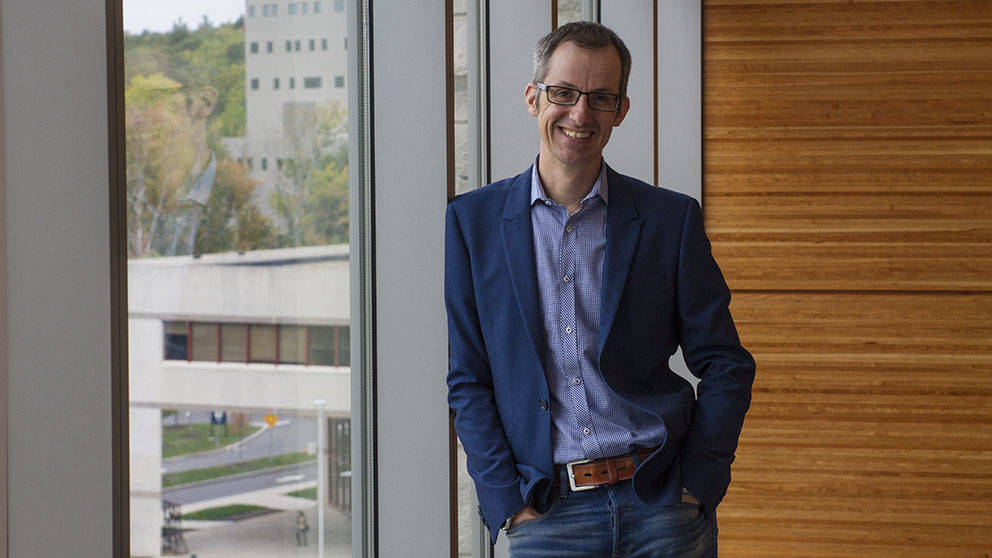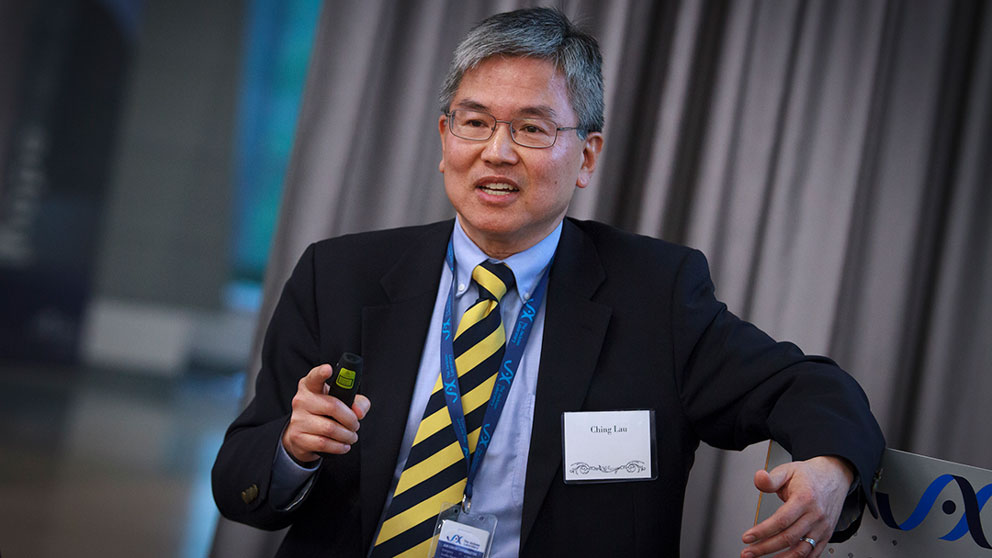Jackson Laboratory (JAX) Professors and Ching Lau, M.D., Ph.D.Dr. Lau specializes in pediatric brain and bone tumor research. His clinical interests include neuro-oncology, solid tumors, and osteosarcoma.Ching Lau, M.D., Ph.D., have received awards from the National Cancer Institute to participate in a research consortium studying aggressive brain cancers in adults and children.
Glioblastoma is one of the most lethal and treatment-resistant forms of brain cancer in both adults and children. Treating glioblastomas presents particular challenges because of the nature of the brain tumors themselves: each tumor is a fast-growing, unique hodgepodge of different kinds of cells. Standard cancer treatments, such as chemotherapy and radiation, often have limited effects.
Although cancer researchers at JAX and other institutions have made significant progress toward characterizing these tumors — gathering information such as genome sequences, cell-type composition, and growth patterns — translating that research into effective treatments has proven difficult. No novel treatment so far has been able to reliably wipe out cancer cells.
Verhaak and Lau have joined national consortiums of scientists and clinicians, including the Dana Farber Cancer Institute, Stanford Medicine, the Memorial Sloan Kettering Cancer Center, and the Mayo Clinic.
Together, they are expanding the scope of their glioblastoma research to include tumor samples and information from patients across the country while simultaneously zooming in to obtain useful information on cellular and molecular levels.
Advancing clinical CARE in adult patients

In adults, glioblastoma is not only the deadliest form of brain cancer but also the most common. Verhaak is one of 14 principal investigators who will be leading Project CARE: Cellular Analysis of Resistance and Evolution. The group is emphasizing in-depth analysis with the ultimate goal of developing precise, efficacious treatments for glioblastoma.
Since 2014, Verhaak’s lab at JAX has been leading the international Glioma Longitudinal Analysis Consortium (GLASS). That project aimed to catalog the molecular changes taking place in brain tumors over the course of growth and treatment.
“The new CARE Consortium builds upon the foundations laid by GLASS, taking it one step further,” says Verhaak. Researchers in the consortium plan to use cutting-edge technology to analyze individual cells and their surrounding environments within tumors.
“Through CARE, we can bring together a large number of clinical and research sites that will jointly explore how glioblastoma tumors adapt over time, at the greatest level of detail: the single cell,” Verhaak explains. “Because of that, the CARE Consortium will provide critical new insights into why glioblastoma tumors do not respond to chemo-radiation therapy.”
By studying individual tumor cells over time, Verhaak and his collaborators hope to be able to make better predictions about how glioblastoma will develop and react to various situations and treatments. Clinicians are particularly interested in identifying cancer cell vulnerabilities that they can target with new therapies.
HOPE for pediatric glioblastoma

Like Verhaak, Lau spends much of his time studying brain cancer; however, Lau focuses on children rather than adult patients. Although glioblastomas are rare in children compared to adults, survival rates are abysmally low when pediatric cases do appear.
Lau’s group is one of 16 laboratories across the United States that will be participating in Project HOPE: Pediatric and Adolescent and Young Adult High-Grade Glioma Omics Project. Project HOPE focuses on using advanced single-cell techniques, seeking to understand the interactions between cancer and the immune system, as well as cells’ surrounding environments inside the brain or the tumor itself. This deeper understanding will also aid Lau in the development of more accurate genetically engineered mouse models that can be used to test treatments further down the road.
In children, brain tumors frequently hijack the normal, healthy development of neurons. Scientists believe that, after further investigation, they may be able to develop targeted therapies that interfere with this hijacking process and thereby prevent tumor growth. Also, studying tumor evolution will help Lau's research team better understand how some cancers develop resistance to existing treatments.
The collaborative nature of the HOPE consortium is particularly crucial because pediatric glioblastomas are rare. Without sharing data, any given laboratory would struggle to find enough patients to provide the breadth of data needed for a meaningful study.
"The smaller numbers of patients have dramatically slowed the progress of clinical trials," Lau says. "With this new collaboration, experiments and analyses can move faster and eventually lead to more effective and reliable treatments."